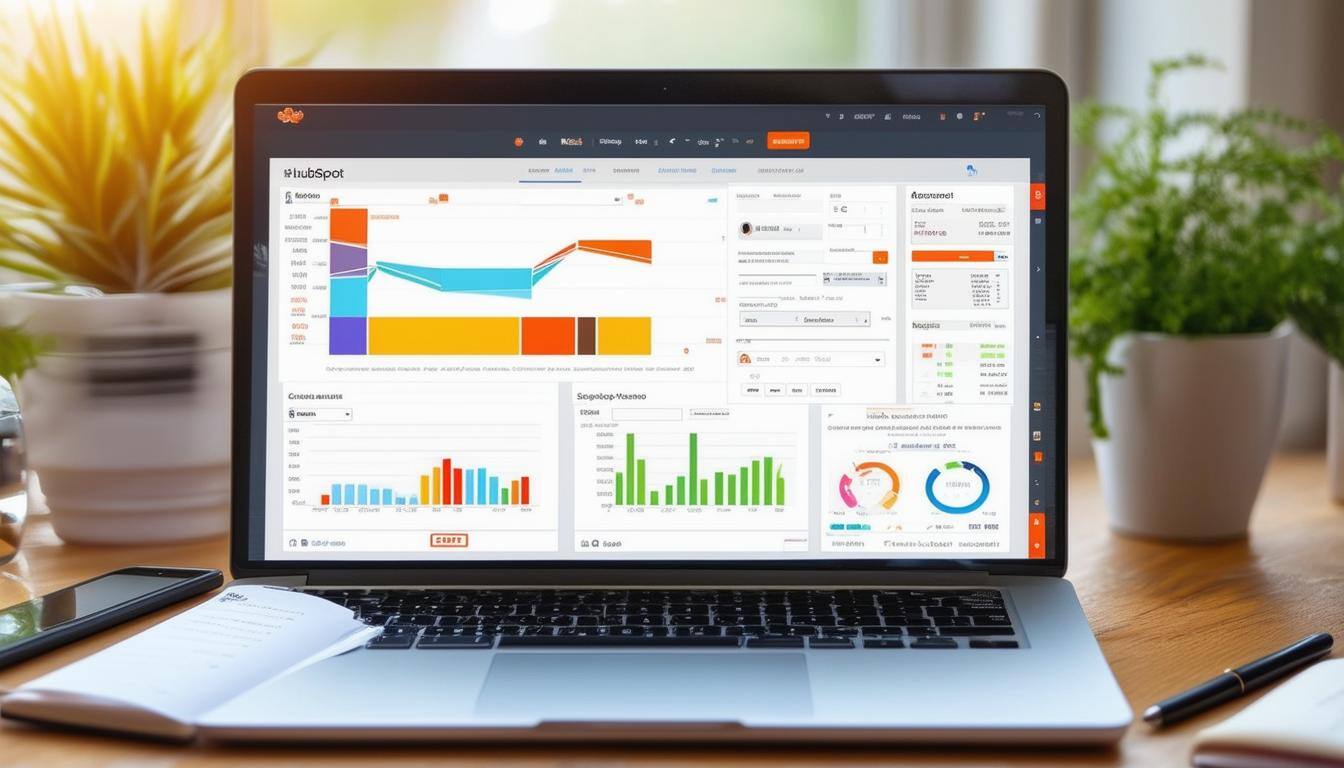Why Your Website Navigation Might Be Killing Conversions (And How to Fix It)
Recently, we’ve audited a SaaS site with killer content, strong traffic, and a solid product-market fit. But the bounce...
Leverage our extensive HubSpot development experience to build anything in HubSpot CMS.
Redesign a website with a theme, build a custom one, or migrate to HubSpot CMS
Automate workflows with apps, custom objects, HubSpot API integrations & CRM extensions
Get our Level Up HubSpot theme, or work with us to build a custom HubSpot theme
Build HubSpot Calculators & Interactive Conversion Tools
Make the most of Shopify themes. Connect with us to build a custom Shopify solution
Secure and scalable HubSpot web design for cybersecurity companies
Optimize your brand for AI-driven search with our comprehensive SEO strategies.
In This Article
Updated: June 2, 2025
|
Published: September 16, 2024

Listen to the audio version

Lead generation can feel like an uphill battle. One tool that’s gaining attention for its effectiveness is the custom HubSpot calculator. These calculators go beyond simple number crunching—they engage users by offering personalized, relevant insights that keep them invested in your website.
When a potential customer uses a custom calculator, they’re providing key details about their needs and getting real-time feedback that matters to them. This interactive experience helps build trust while positioning your brand as a helpful resource.
The real-time information these tools provide—whether it’s ROI, savings, or pricing estimates—can make decision-making easier for prospects, increasing the chances of a conversion.
To get the most out of a HubSpot calculator, a few elements are critical:
Personalization: The calculator should adapt to the user’s specific needs. Generic results won’t cut it—tailored outcomes that reflect their situation are what really make an impact.
CRM Integration: The data your calculator gathers should flow straight into HubSpot. This means your sales team can follow up quickly and with all the right information.
Simple Design: The interface needs to be easy to navigate. If users have to struggle through a clunky process, they’ll drop off before finishing. Keep it clean and straightforward.
Mobile-Friendly: More and more users access content from their phones. Ensure your calculator works smoothly across all devices.
Visual Appeal: While functionality is the priority, a touch of visual appeal—like progress indicators—can enhance user engagement without overcomplicating things.
Creating a custom HubSpot calculator is straightforward, but each step needs careful attention:
Consultation: Start by discussing your goals. What kind of calculator do you need? What information should it collect? How will it help your lead generation efforts?
Design & Development: Once you have a plan, it’s time to build. This involves coding using HTML, CSS, JavaScript, and HubL, ensuring a smooth and interactive experience.
Integration & Testing: After development, integrate the calculator with your CRM and run thorough tests to ensure accuracy and functionality.
Launch & Monitor: Once live, monitor how the calculator is performing. Small adjustments might be needed to improve user engagement or boost conversions.
Developing a HubSpot calculator requires using several technologies. HTML and CSS create the structure and design, while JavaScript handles user inputs and real-time calculations. HubL allows seamless integration within HubSpot’s system, while Bootstrap ensures that the calculator looks good and functions properly across devices.
For more advanced features like dynamic data visualization, tools like Google Charts can be integrated, making the results easier to understand.
A well-made calculator can become a lead-generating powerhouse. To get the best results, follow these tips:
Make It Simple: The fewer steps, the better. Users should be able to complete the process in 3-5 steps without feeling overwhelmed.
Emphasize Value: Right from the start, make sure users know what they’re getting—whether it’s a personalized quote, an ROI estimate, or cost savings.
Capture Leads: Place a lead capture form at the end, but keep it subtle. Offer users something valuable, like detailed results, in exchange for their contact information.
Optimize for SEO: Make sure your calculator is search-friendly by using keywords like "equipment finance" and optimizing meta descriptions. Placing it on high-traffic pages helps drive more visitors.
A/B Testing: Regularly test different versions of the calculator to see what works best in terms of engagement and conversions.
Companies across different sectors have successfully implemented HubSpot calculators to drive better lead generation results. For example, ProfilePlan used a personalized plan calculator that helped boost conversion rates on their landing pages by 50%. Similarly, PUREDI’s revenue loss calculator gave customers instant ROI insights, which increased engagement and led to more qualified leads.
Another example comes from a website development firm that used an instant quote calculator. By offering real-time pricing, they were able to capture valuable user data and convert more visitors into leads.
Adding a custom HubSpot calculator to your website could make a big difference in how you capture and convert leads. Whether you’re in equipment finance or another industry, these tools offer a way to engage visitors and turn them into potential customers.
.png?width=343&height=334&name=Frame%20(3).png)
.png?width=343&height=479&name=Frame%20(4).png)
Dive into our blog to discover a wealth of knowledge and expertise in the world of email services.
Recently, we’ve audited a SaaS site with killer content, strong traffic, and a solid product-market fit. But the bounce...
Above image is from HubSpot's INBOUND 2025 session. Search engines aren’t just crawling your site—they’re training on...
Last month, I had a call with a marketing director who spent close to $50,000 on a gorgeous website redesign. Six...
HubSpot Staging Sites: Why You Absolutely Need One Online presence is not a “set it and forget it” type of deal. To get...
.png?width=204&height=62&name=Frame%20(13).png)
.png?width=204&height=62&name=Frame%20(18).png)
.png?width=204&height=62&name=Frame%20(11).png)
.png?width=204&height=62&name=Frame%20(12).png)
.png?width=204&height=62&name=Frame%20(15).png)
.png?width=204&height=62&name=Frame%20(16).png)
.png?width=204&height=62&name=Frame%20(17).png)
.png?width=204&height=62&name=Frame%20(17).png)
.png?width=194&height=62&name=Frame%20(20).png)
Copyright © 2025 HubBase, Inc.